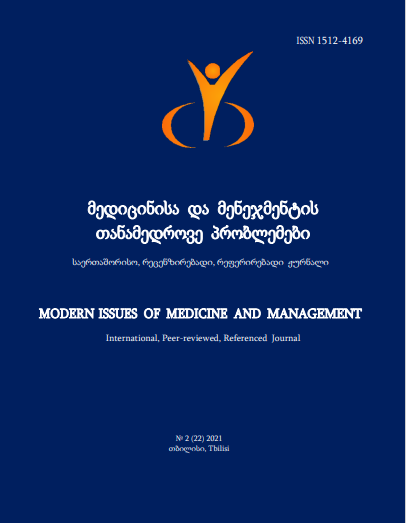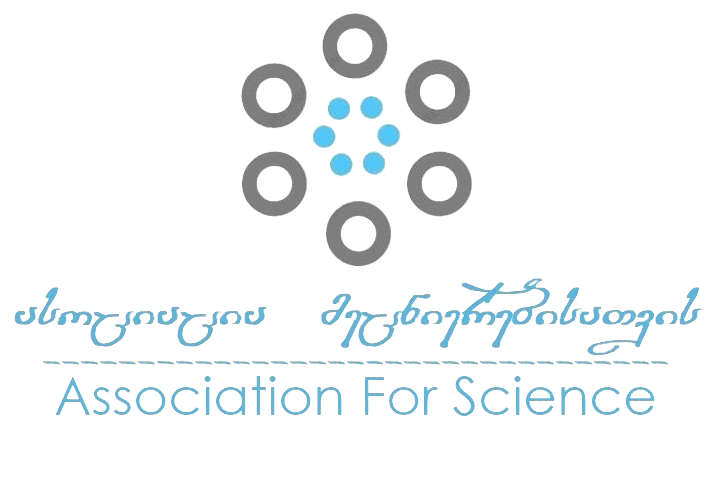Isolation and Study of Bacteriophages Specific Against Multidrug Resistant Salmonella spp. and Assessment of their Therapeutic Potential
DOI:
https://doi.org/10.52340/mid.2021.641Keywords:
bacteriophages, salmonella, bacteria, resistance to antibioticsAbstract
Within the scope of the study, clinical non-typhoidal Salmonella were isolated in Armenia and Georgia and identified based on conventional microbiological methods and MALDI-TOF MS. These isolates were further analysed by serotyping (White-Kauffmann-Le Minor scheme) and their antimicrobial susceptibility profiles were defined. A total of 40 antibiotic resistance profiles were identified, of which 35 were characteristic of clinical strains. Out of a total of 345 isolates, 238 strains from Georgia, Armenia and Ireland were eventually selected for our study. Using the strains of this collection, 13 new bacteriophages were isolated, characterized by biological and genetic features. Based on the data obtained, phages were classified and the peculiarities of their life cycle were determined (virulent-lytic, moderate-lysogenic). Analysis of the sequencing results showed that only one of the 12 phages identified as temperate phage (vB_GEC_ TR), it belongs to the family Podoviridae, genus-Laderbergvirus. While the other 11 phages are virulent, they are related to well-known and characterized phages, which are used in various phage preparations. Analysis of their genomes did not show any lysogeny associated genes. Among the virulent phages, 6 are members of Myoviridae family (vB_GEC_B1, vB_GEC_B3, vB_GEC_MG, vB_GEC_BS, vB_GEC_NS7, vB_GEC_7A) and 5 of the Syphoviridae family (vB_GEC_N5, vB_GEC_N8, vB_GEC_M4, vB_GEC_M5, vB_GEC_Hi). In vitro tests revealed that the phages - vB_GEC_B1, vB_GEC_BS, vB_GEC_B3, vB_GEC_NS7, vB-GEC-N8 showed high activity (60% to 80%) against the examined strains. The phages have been shown to be more effective against clinical strains (≈90%) than against veterinary strains (≈70%). The strains susceptible to these phages were mainly S.typhimurium and S. Enteritidis serovars and are largely of clinical origin. Based on our research we can conclude that the application of phages as an additional tool for the treatment of MDR Salmonella infections seems to be plausible. Phages are natural and specific antibacterial agents, which can lyse bacteria irrespective of their AMR status, whilst leaving the commensal microflora unharmed. This is one of the main advantages of phages in comparison to antibiotics. The phages tested in this study showed potential for application in phage therapy against MDR Salmonella infections.
Downloads
References
https://www.who.int/en/news-room/fact-sheets/detail/salmonella-(non-typhoidal). Who Facts. 2018:4620869. 2.http://www.who.int/features/factfiles/diabetes/facts/en/index.html accessed on 19-06-13.
States U. Antibiotic Resistance Threats in US, 2013. 2013. https://www.cdc.gov/drugresistance/threat-report-2013/pdf/ar-threats-2013-508.pdf#page=13.
Shrivastava SR, Shrivastava PS, Ramasamy J. World health organization releases global priority list of antibiotic-resistant bacteria to guide research, discovery, and development of new antibiotics. JMS - J Med Soc. 2018;32(1):76-77. doi:10.4103/jms.jms_25_17.
Shannon Katiyo, a Berit Muller-Pebody B, Mehdi Minaji, b David Powell, c Alan P. Johnson, b Elizabeth De Pinna, c Martin Day C, Ross Harris D, Gauri Godbolea c a. Epidemiology and Outcomes of Nontyphoidal Salmonella Bacteremias from England,
to 2015. J Clin Microbiol. 2019;57(1):1-10.
Anna A, Iwona C, Gregorczyk P. Phage Therapy in Bacterial Infections Treatment : One Hundred Years After the Discovery of Bacteriophages. 2017:277-283. doi:10.1007/s00284-016-1166-x.
Grimont, PAD. Weill F. Institut Pasteur - Antigenic Formulae of the Salmonella Serovars. 2007.
MARK H. ADAMS. Bacteriophages.
Mahony J, McAuliffe O, Ross RP, van Sinderen D. Bacteriophages as biocontrol agents of food pathogens. Curr Opin Biotechnol. 2011;22(2):157-163. doi:10.1016/j.copbio.2010.10.008.
Makalatia K, Kakabadze E, Wagemans J, et al. Characterization of Salmonella Isolates from Various Geographical Regions of the Caucasus and Their Susceptibility to Bacteriophages. Viruses. 2020;12(12). doi:10.3390/v12121418.
Klumpp J, Fouts DE,Sozhamannan S. Next generation sequencing technologies and the changing landscape of phage genomics. Bacteriophage. 2012;2(3):1901-99. doi:10.4161/bact.22111









